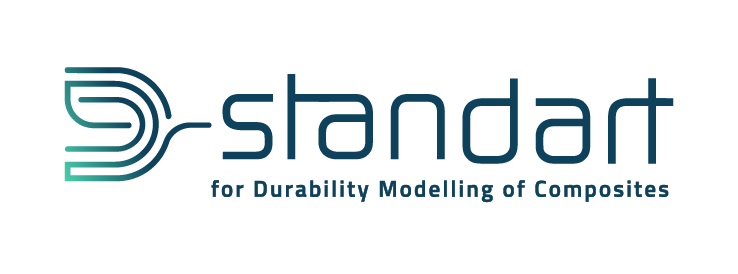Advanced composites are gaining ground in many areas, especially aerospace, automotive and renewable energies, as they are lightweight and help to save energy. What is still missing are accurate and fast pre-production methods to optimise the durability of such large-scale composite structures. The aim of the newly launched EU-funded project D-STANDART is therefore to develop efficient methods to model the durability of large-scale composite structures of any design under realistic conditions. Advanced composites play a crucial role in efforts to achieve a carbon-neutral future, enabling structures that are simultaneously resistant and lightweight, and therefore energy-efficient, for example, in the aerospace and wind turbine sectors. The increased use of large composite structures raises concerns regarding their damage tolerance and durability, which is currently generally assessed using imprecise and time-consuming techniques. Structures at these scales experience extreme loads and stresses, especially when optimised to use as little material as possible. Accurate and reliable fatigue assessment is therefore necessary to ensure the long-term integrity of the light-weight structures we need for a climate-neutral and sustainable future. Hence the objective of D-STANDART is to develop fast and efficient methods to model the durability of large-scale composite structures with arbitrary lay-ups under realistic conditions (loads, environment). State of the art “Fatigue characterisation is crucial for the uptake of composite materials” – NLR project leader, Vis Dhanisetty In fact, most composite material fatigue modelling in today’s design tools is based on hypothetical extensions of metal fatigue models for composite structures. As a result, composite materials are not modelled using the latest science and therefore not used as efficiently or effectively as they could be with the updated models that have recently become available. D-STANDART’s approach To this end, D-STANDART will develop new test methods using generic specimens to correctly quantify material parameters that determine the durability of composites under cyclic loading. By utilising high-frequency testing methods, testing times will be greatly reduced. This high-frequency testing will be enabled by scaling off the temperature dependency, thereby accounting for the self-heating that occurs during such testing. The material characterisation will be used in high-fidelity models to simulate defect growth in various lay-ups and at various scales as a function of cyclic loading and rate. To apply these models in an industrial design environment, D-STANDART will make use of Artificial Intelligence (AI) surrogate models, trained using test data from the project and historical test data to easily adapt to different design parameters and complex lay-ups, thereby accelerating the development, uptake, and commercialisation of advanced components. Project leader Vis Dhanisetty: “Fatigue characterisation is crucial for the uptake of composite materials. These materials are key enablers of sustainability within the air transport and energy sectors. Hence, D-STANDART will build up knowledge of composite materials under fatigue loading and shortening the time-to-market of composite products”. Two starting points (use cases) have been selected to validate the modelled durability performance in the aerospace and renewable energy sectors. Furthermore, circularity and sustainability will be assessed via dedicated life-cycle assessment, life-cycle costing, and cost-benefit analysis. The consortium NLR will coordinate the project and it’s responsible for the fatigue testing, fatigue model validation of composite materials and for setting up the digital thread. The other partners of the project are: University of Twente, University of Bristol, NCC Operations Ltd, iCOMAT Ltd, Delft University of Technology, MSC Software (a Hexagon Company), L-up, and SE Blades Technology. Additional information about the project can be found at their website (https://d-standart.eu/). Would you like to know more? Please also read our previously published articles, about the whitepaper ‘Aircraft structural design in the future‘ and about the purchase of an electric 20kN fatigue machine. For additional information you can also visit our website about the NLR programme ‘development of air and space vehicles‘.
Currently, the lack of sufficient understanding of composite materials fatigue is typically dealt with using conservative design approaches to ensure that manufacturing defects or undetected impact damage do not lead to crack growth and catastrophic failure. While this cautionary-over-design approach ensures product safety, it does not allow for optimised weight and material use. Due to limited access to modern fatigue models for composites, manufacturers still rely heavily on expensive and time-consuming testing campaigns to validate their designs.
To unlock the full potential of composites to reduce structural weight and extend lifetime, thereby reducing environmental impact, D-STANDART tackles the problem from three angles: By accelerating the characterisation of the fatigue properties of composite materials, eliminating the need to test each type of lay-up individually, and finally, by developing the modelling capability to relate the behaviour of large-scale structures with complex geometries and potential manufacturing defects, to the results of coupon tests.
D-STANDART involves nine partners from four countries (France, Germany, the Netherlands and the United Kingdom). The Advisory Board consists of six end-users (Rolls Royce, Fokker Aerostructures, Leonardo, Siemens Gamesa, Embraer, Coexpair) and will support the consortium by validating requirements, guiding the project’s approach to certification, and finally supporting results’ uptake in tight alignment with the European Materials Modelling Council (EMMC) and European Materials Characterisation Council (EMCC).
D-STANDART is a three-year research project funded by the European Commission under the Horizon Europe Programme (grant agreement number 101091409).
Views and opinions expressed in this article are those of the author(s) only and do not necessarily reflect those of the European Union. Neither the European Union nor the granting authority can be held responsible for them.




